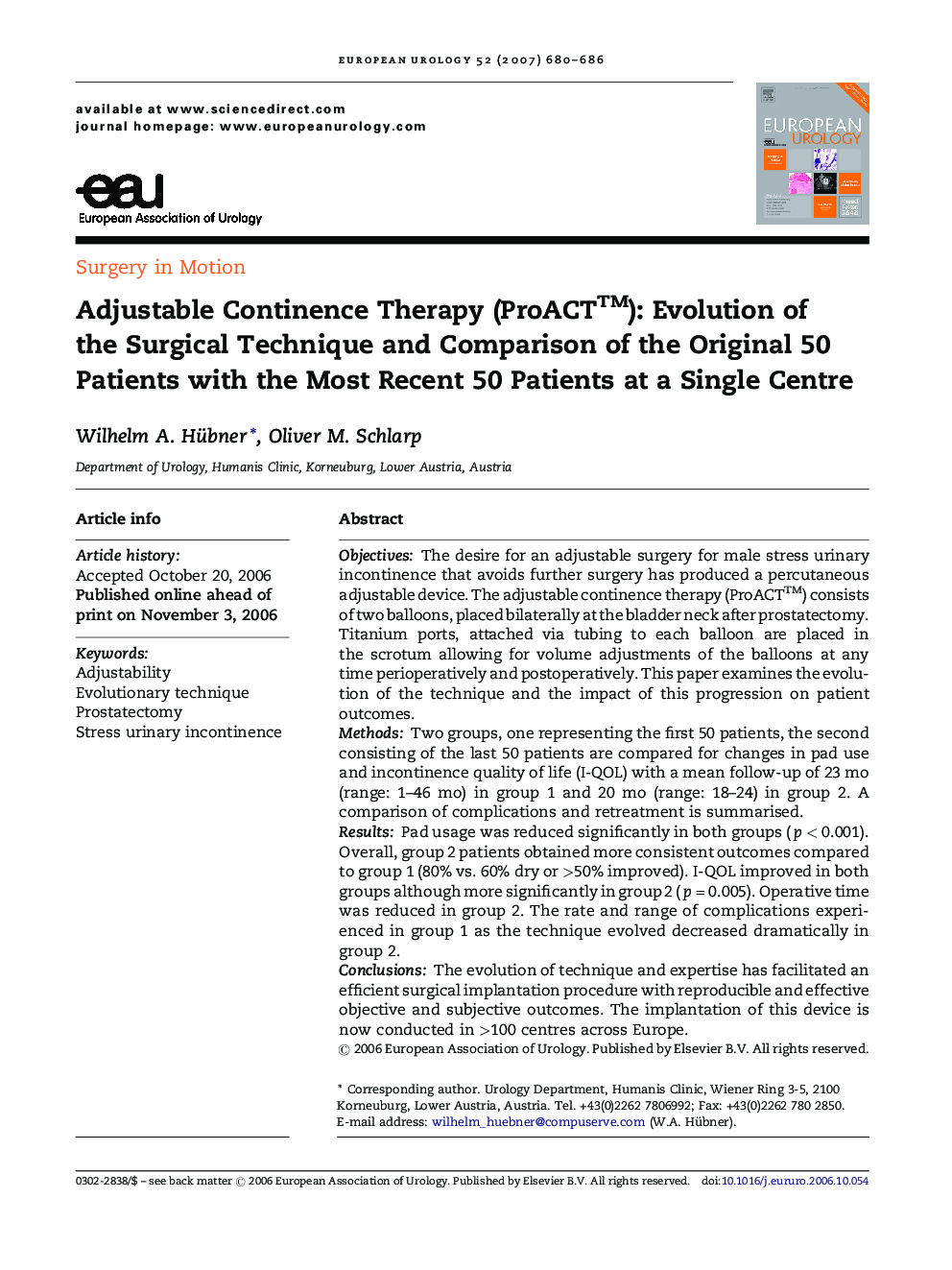| Article ID | Journal | Published Year | Pages | File Type |
|---|---|---|---|---|
| 3926051 | European Urology | 2007 | 7 Pages |
ObjectivesThe desire for an adjustable surgery for male stress urinary incontinence that avoids further surgery has produced a percutaneous adjustable device. The adjustable continence therapy (ProACT™) consists of two balloons, placed bilaterally at the bladder neck after prostatectomy. Titanium ports, attached via tubing to each balloon are placed in the scrotum allowing for volume adjustments of the balloons at any time perioperatively and postoperatively. This paper examines the evolution of the technique and the impact of this progression on patient outcomes.MethodsTwo groups, one representing the first 50 patients, the second consisting of the last 50 patients are compared for changes in pad use and incontinence quality of life (I-QOL) with a mean follow-up of 23 mo (range: 1–46 mo) in group 1 and 20 mo (range: 18–24) in group 2. A comparison of complications and retreatment is summarised.ResultsPad usage was reduced significantly in both groups (p < 0.001). Overall, group 2 patients obtained more consistent outcomes compared to group 1 (80% vs. 60% dry or >50% improved). I-QOL improved in both groups although more significantly in group 2 (p = 0.005). Operative time was reduced in group 2. The rate and range of complications experienced in group 1 as the technique evolved decreased dramatically in group 2.ConclusionsThe evolution of technique and expertise has facilitated an efficient surgical implantation procedure with reproducible and effective objective and subjective outcomes. The implantation of this device is now conducted in >100 centres across Europe.
